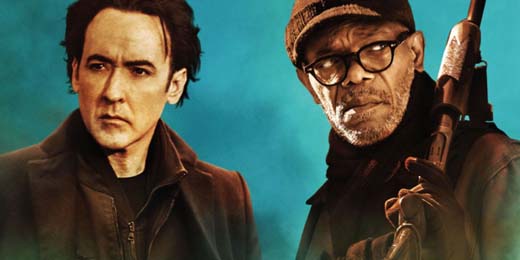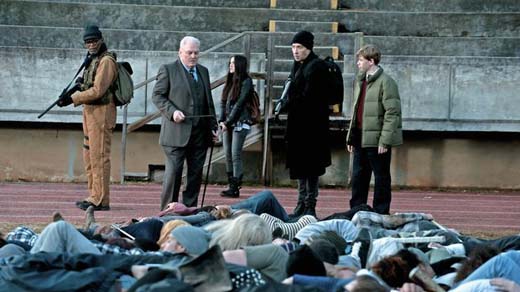Review: Cell (2016)
Armies of everyday people mindlessly roaming the streets of every major city controlled by their cell phones. No, its not Pokémon GO: The Movie, its the latest Stephen King big screen adaptation, Cell, starring John Cusack and Samuel L. Jackson. Find out if we think this Cell has a bad connection.
Right now, fans of 80’s nostalgia are eating up Netflix’s recent original genre series Stranger Things. It’s evocative of the great defining genre films of the late 70’s and early 80’s like Alien, Firestarter, The Goonies, & Stephen King’s It. Stranger Things evokes Stephen King’s presence and influence constantly throughout its run; King’s work has been genre-defining for decades and people have a deep respect and affinity for most of the big and small screen adaptations of his work. In this milieu, one would think that the most recent King adaptation, Cell, would have a strong and receptive audience in the wake of people discovering Stranger Things. Unfortunately, Cell, starring John Cusack, Samuel L. Jackson and Orphan’s Isabelle Fuhrman, suffers from a overly familiar plot and execution to people who would watch AMC’s The Walking Dead. Moreover, it offers very little to try to distinguish itself from the recent slate of post-apocalyptic fiction in the vein of The Strain or The Road that it draws inspiration from.
Cusack plays Clay Riddell, a “graphic novelist” who is estranged from his family and is trying to reconcile his marriage. While on the phone with his family at the airport, a massive cell signal burst triggers a rage zombie epidemic in the airport. All who hear the signal becomes violent, mindless, aggressive killers. Cusack survives the initial onslaught and meets Tom McCourt (Jackson), a fellow survivor and Alice (Fuhrman) in the ensuing apocalypse as they try to make their way to find Riddell’s family and some sense of belonging in the madness.
At this point, any horror fan would pick up how similar the structure and plot are to World War Z and The Strain. Director Tod Williams struggle to find something new to say about life in the post zombie apocalypse and Cusack and Jackson sort of sleepwalk through the film as they make alliances and loose them just as easily. The “zombies” in the film communicate via phone modem noises to each other and congregate in hive minds near cell towers for instructions. The hive mind aspect seems a concept ripe for exploration but it all goes but untouched in the film. There’s a scene later on where Jackson and Cusack stumble across a prep school where a huge hive of zombies rests for the night and they drive over them in an irrigation truck to set them on fire. While this would seem a horrific concept; especially given how the zombie apocalypse seems to have just barely struck. The two wearily carry it out, complaining about the tire being stuck in a body at one point. The film is utterly joyless and really doesn’t add anything new to the oeuvre. We’re also introduced to a character called the Raggedy Man who serves as the head of the hive mind to rush us towards the possible conclusion of Cusack’s character saving his son. The Raggedy Man comes across as a parody of King antagonists like Isaac from Children of the Corn and seems to be one of the few King-like touches in the film. The ending also deviates from the book in a way that seems only to serve the plot towards a twist ending.
Ultimately, Cell falls into the lower eschelon of King adaptations and suffers from a case of having nothing to say. For those seeking a King fix, Stranger Things serves up a better alternative.




